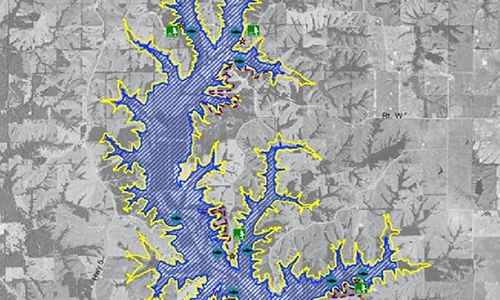The National Environmental Policy Act and the Clean Water Act required a study be performed on the impacts and alternatives to the East Locust Creek Reservoir. ELCR had an approved Environmental Impact Statement in 2006, however, a Supplemental Environmental Impact Statement was needed to update the alternatives analysis to meet the current United States Army Corps of Engineers’ requirements. The alternatives analysis included in the SEIS will be used by USACE to finalize a 404 permit authorizing placement of fill in the Waters of the United States, under the rules set forth in the CWA. As a part of the NEPA and 404 permit requirements, a public hearing was held yesterday from 3:00 to 7:00 at the Milan Community Center. Representatives from the Natural Resources Conservation Service, the USACE, and the North Central Missouri Regional
Water Commission’s East Locust Creek Reservoir Project Team were present to take comments and answer questions from the public about the draft SEIS and the 404 permit application. The comments will be reviewed and considered and a determination will be made for revisions to the SEIS and the 404 permit.
The NRCS will finalize the SEIS, which should lead to a Record of Decision. The issuance of the ROD is a significant milestone marking the completion of the NEPA requirements for the project. Once USACE has confirmed that the project is in the public interest and that impacts to the WOTUS have been avoided and minimized, a mitigation plan will be developed to offset the adverse impacts to the WOTUS and a 404 permit will be issued. There are other requirements for other permits in the works, such as a State Dam Safety Permit. but, the ROD and 404 Permit represent the most difficult and arduous parts of the permitting process. All signs lead to construction beginning in 2021. Permission to begin pre-construction activities has been asked of the NRCS. Those activities include providing construction access routes and timber harvest.







